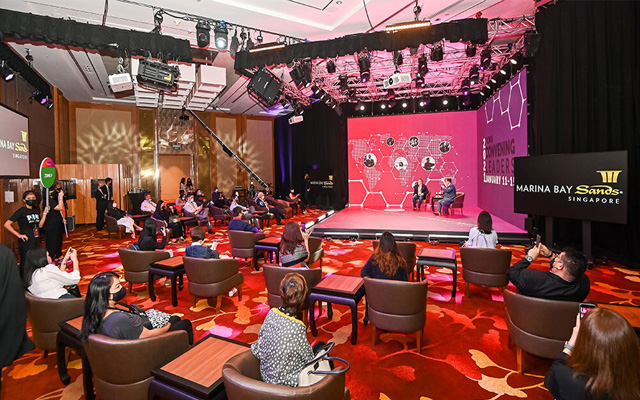Nearly one-third of business events professionals doing business in Australia, New Zealand, and South-east Asia said that they are unable to estimate in-person registration numbers for an event this year until they get closer to its planned date, while more than one-third are making the go/no-go decision on an in-person event in 2021 within two months of the event date.
These were some of the findings from the most recent PCMA APAC Dashboard Survey conducted from April 13-26, of 184 respondents.

Respondents to the survey were both business event professionals (66%) and suppliers (34%), who do the majority of their business in Australia and New Zealand (38%), followed by South-east Asia (36%). The largest percentage work in professional services (32%), followed by independent planners and agencies representing clients in a variety of industries (27%).
On how they were feeling at this point, one-third said their mood was hopeful, 16% are feeling inspired and creative, and 15% said they were determined, sort of a middle ground. A collective 36% expressed a less positive outlook, saying they were doing their best to get by, anxious about the future, or exhausted and burned out.
Around half of respondents (52%) said they are focusing their reskilling efforts on designing live experiences in post-Covid-19 physical environments, slightly down from 55% of respondents who identified this as an important new skill in a PCMA APAC survey conducted last July. And only 57% of respondents said that they are focused on designing digital event experiences, compared to 74% of planner respondents to the 2020 survey.
A possible interpretation of this data point may be that respondents to the recent survey have become more proficient in digital event design in the nine months between the two surveys, and/or they are focusing more of their efforts on convening small face-to-face events safely.
In fact, 82% of respondents were planning an in-person event this year, with the largest contingent (44%) scheduling events for 4Q2021.
They do expect their in-person events, however, to look very different than in pre-Covid times. Sixty per cent estimate that the rise in the use of digital-event technology will have a high or extensive impact on face-to-face attendance at 2021 events, slightly higher than predictions in last year’s survey — slightly more than half of planners said they anticipated a high or extensive impact this year. Looking ahead to 2022, only 39% foresee a high or extensive impact on attendance, with the largest percentage (44%) planning their 2022 events for the first quarter.
And while only 15% of respondents described their mood as determined, pulling off their events with anticipated quick turnarounds will certainly require grit. More than one-third said they are making the go/no-go decision on planning an in-person event within two months of the event date, the shortest window offered among the survey options.
That the post-Covid-19 environment remains fluid and uncertain is also backed up by respondents’ estimates for in-person registration numbers: Nearly one-third say they were unable to estimate until they got closer to the event date. Of those hazarding a guess, 46% expected declines of up to 50% or more in attendance for their 2021 in-person event vs the same event held in pre-pandemic times. The largest percentage — 46 % — do not anticipate any overseas delegates attending these events. In mid-May, government officials confirmed that Australia will remain closed to the rest of the world until mid-2022.
The most popular scenario for the recovery of face-to-face meetings, chosen by 36% of respondents, is that smaller local and regional events will thrive before national and international groups gather.
While 30% of participants expect that people will travel to regional and domestic events in 3Q2021 and 4Q2021, 28% acknowledged that despite a pent-up demand for in-person events, organisations will avoid assuming risks associated with business travel, and 23% cited budget cuts, the economy, and job insecurity as playing a key role in limiting attendance.
Respondents are pursuing several different models of hybrid events — they are almost evenly split between holding a simultaneous in-person event with streaming video and a separate online programme for a virtual audience (37%) and the same offering but without separate online content for digital participants (38%). The vast majority (79%) see interaction between the in-person and digital audiences as an important aspect of a hybrid event.
That event professionals are pursuing a hybrid approach to their events is also evidenced by the fact that nearly 70% of survey participants are making broadcasting facilities a criterion for future events in their site-selection process, with 74% prioritising broadcast quality virtual event and studio spaces and 68% looking for facility staff with experience in running digital events. Of course, costs are a deciding factor as well, cited by 70% of respondents.
Finally, events professionals’ resourcefulness comes through in their responses to the question, How has your event/s business model changed? In almost equal percentages, survey respondents said they had become less reliant on face-to-face event registrations and/or sponsors (49%) and had changed the frequency of their events (48%). Thirty per cent have adopted a hub-and-spoke model with regional gatherings and a virtual audience and 31% have found ways to monetise the digital audience by becoming more data driven.
The full report can be found here.





















